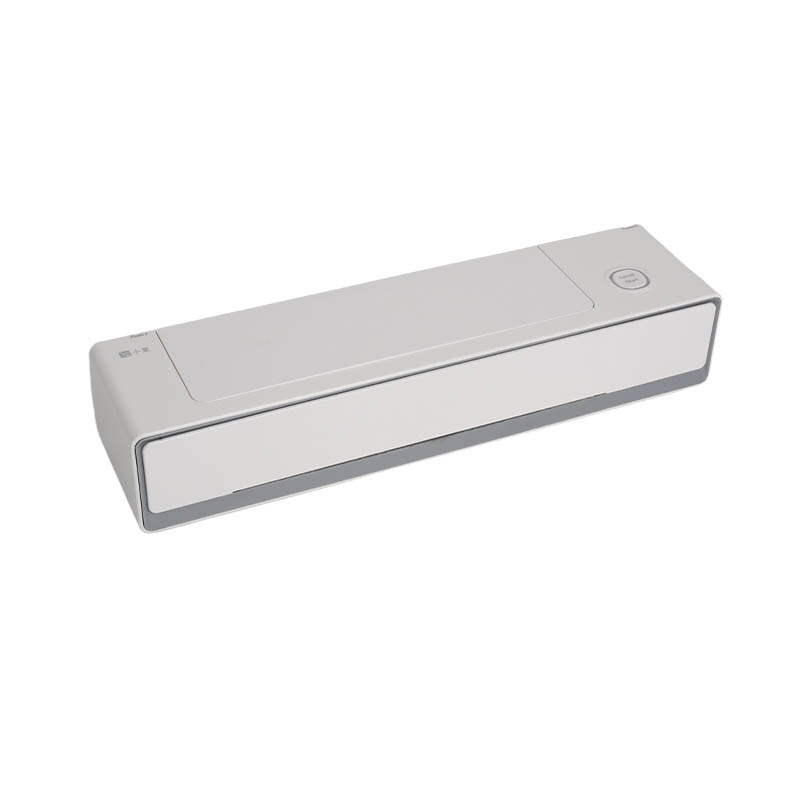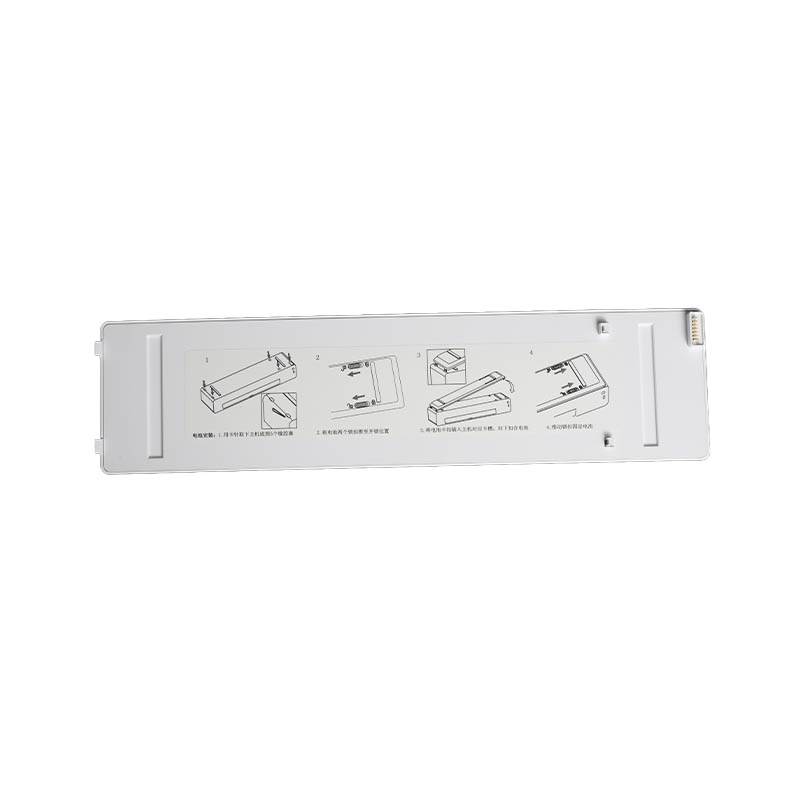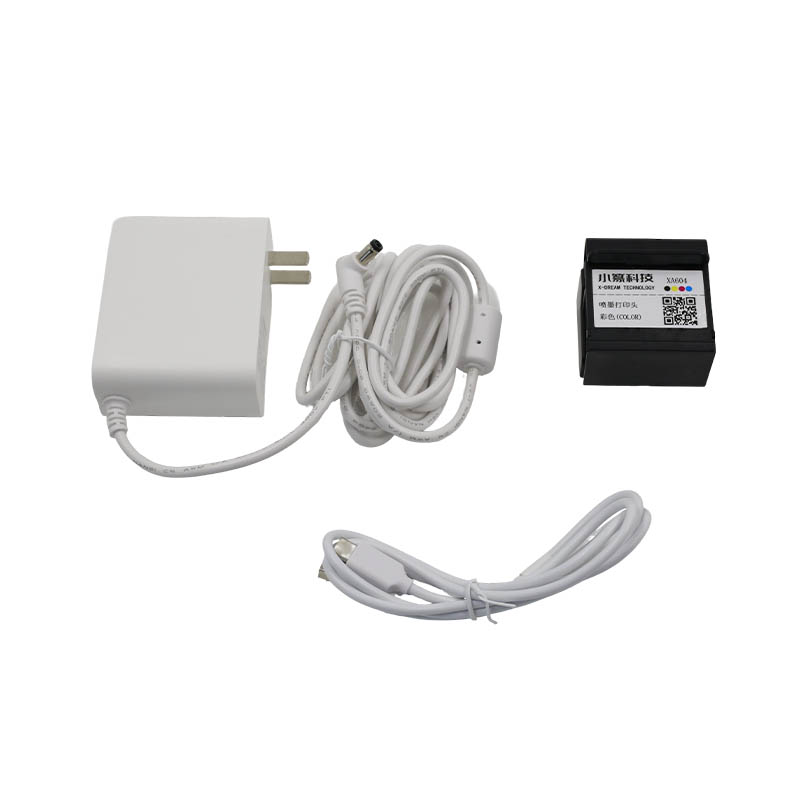Why do portable inkjet printers allow printing on the go, breaking spatial limitations?
Release Time : 2025-10-30
In today's digital age, where work and life are swept up in a wave of digitalization, the generation and transmission of information are more convenient than ever before. However, at times, people still need a physical paper voucher, an instant label, or a tangible document. Traditional printers are often fixed to a corner of the desk, relying on power, data cables, and a stable environment. Once away from the workstation, printing becomes a problem. The emergence of portable inkjet printers has completely changed this situation. It liberates printing capabilities from a fixed workstation, truly achieving "printing on the go," freeing output from spatial constraints.
The core advantage of portable inkjet printers lies in their extremely compact design. They abandon the bulky structure of traditional printers, adopting a highly integrated modular construction that condenses the print head, ink system, paper feed mechanism, and control unit into a small body. This compact layout not only significantly reduces the overall weight but also makes it resemble a book or a power bank, easily fitting into a briefcase, backpack, or even a coat pocket. Whether in a high-speed train carriage, a client's office, a trade show venue, a warehouse corner, a courier station, or a temporary outdoor outpost, users can simply carry the printer with them and start a printing job anytime, truly turning the printing device into a portable tool.
The independence of power supply further enhances its spatial freedom. These printers typically have built-in high-efficiency batteries that support multiple consecutive printing jobs without relying on wall outlets. They can still operate stably even in outdoor environments without outlets or in mobile vehicles. Charging methods are also becoming more diverse, with power replenishment via power banks, car chargers, or laptop USB ports, adapting to various temporary work scenarios. This energy autonomy frees printing from the limitations of outlet location, realizing the transformation from "printing only when there is power" to "printing whenever you want."
The maturity of wireless connectivity technology provides a seamless information channel for portable printing. Through Bluetooth, Wi-Fi, or a dedicated app, the printer can instantly pair with smartphones, tablets, or laptops, freeing users from the constraints of data cables. Users don't need to turn on a computer or connect to a complex network; they can simply edit the content on their phone and print with a tap of the screen. Whether it's issuing receipts on-site, printing waybills, generating meeting materials, or printing study materials for children, the entire process is smooth and natural, requiring no extra preparation. This integrated "device-terminal-output" experience makes the transformation of information from virtual to physical readily accessible.
More importantly, portable inkjet printers break down the barriers of traditional printing processes. Previously, printing often required returning to the office, logging into the system, and connecting the device, which was time-consuming and labor-intensive. Now, the workplace is the printing site. Courier drivers can generate waybills at customers' doors, sales representatives can immediately deliver draft contracts after negotiations, teachers can print practice questions for students in the classroom, and entrepreneurs can instantly create price tags at market stalls. This instant output capability not only improves work efficiency but also enhances the professionalism and responsiveness of services, ensuring that every moment requiring paper documents is met promptly.
In terms of design, these printers also fully consider the convenience of mobile use. The paper feeding method is simple and intuitive, supporting various sizes of label paper, receipt paper, or A4-cut paper to adapt to different printing needs. The user interface is intuitive, with a streamlined button layout. Coupled with a mobile app guide, even non-technical personnel can quickly get started. Some models also feature anti-paper jam design and automatic sleep function, ensuring stability while extending battery life.
In summary, portable inkjet printers enable printing on the go, breaking spatial limitations, because they transform the traditional static function of printing into a dynamic, flexible, and mobile service capability. It's not just about miniaturizing technology, but also about revolutionizing the way we work. It makes printing no longer an action requiring a return to a fixed point, but a natural extension of the entire workflow. Wherever you are, whenever you need to, you can print instantly, truly achieving the freedom of "printing wherever you are." This space-liberating printing method is quietly reshaping people's perception of efficiency and convenience, injecting more possibilities into modern mobile living.
The core advantage of portable inkjet printers lies in their extremely compact design. They abandon the bulky structure of traditional printers, adopting a highly integrated modular construction that condenses the print head, ink system, paper feed mechanism, and control unit into a small body. This compact layout not only significantly reduces the overall weight but also makes it resemble a book or a power bank, easily fitting into a briefcase, backpack, or even a coat pocket. Whether in a high-speed train carriage, a client's office, a trade show venue, a warehouse corner, a courier station, or a temporary outdoor outpost, users can simply carry the printer with them and start a printing job anytime, truly turning the printing device into a portable tool.
The independence of power supply further enhances its spatial freedom. These printers typically have built-in high-efficiency batteries that support multiple consecutive printing jobs without relying on wall outlets. They can still operate stably even in outdoor environments without outlets or in mobile vehicles. Charging methods are also becoming more diverse, with power replenishment via power banks, car chargers, or laptop USB ports, adapting to various temporary work scenarios. This energy autonomy frees printing from the limitations of outlet location, realizing the transformation from "printing only when there is power" to "printing whenever you want."
The maturity of wireless connectivity technology provides a seamless information channel for portable printing. Through Bluetooth, Wi-Fi, or a dedicated app, the printer can instantly pair with smartphones, tablets, or laptops, freeing users from the constraints of data cables. Users don't need to turn on a computer or connect to a complex network; they can simply edit the content on their phone and print with a tap of the screen. Whether it's issuing receipts on-site, printing waybills, generating meeting materials, or printing study materials for children, the entire process is smooth and natural, requiring no extra preparation. This integrated "device-terminal-output" experience makes the transformation of information from virtual to physical readily accessible.
More importantly, portable inkjet printers break down the barriers of traditional printing processes. Previously, printing often required returning to the office, logging into the system, and connecting the device, which was time-consuming and labor-intensive. Now, the workplace is the printing site. Courier drivers can generate waybills at customers' doors, sales representatives can immediately deliver draft contracts after negotiations, teachers can print practice questions for students in the classroom, and entrepreneurs can instantly create price tags at market stalls. This instant output capability not only improves work efficiency but also enhances the professionalism and responsiveness of services, ensuring that every moment requiring paper documents is met promptly.
In terms of design, these printers also fully consider the convenience of mobile use. The paper feeding method is simple and intuitive, supporting various sizes of label paper, receipt paper, or A4-cut paper to adapt to different printing needs. The user interface is intuitive, with a streamlined button layout. Coupled with a mobile app guide, even non-technical personnel can quickly get started. Some models also feature anti-paper jam design and automatic sleep function, ensuring stability while extending battery life.
In summary, portable inkjet printers enable printing on the go, breaking spatial limitations, because they transform the traditional static function of printing into a dynamic, flexible, and mobile service capability. It's not just about miniaturizing technology, but also about revolutionizing the way we work. It makes printing no longer an action requiring a return to a fixed point, but a natural extension of the entire workflow. Wherever you are, whenever you need to, you can print instantly, truly achieving the freedom of "printing wherever you are." This space-liberating printing method is quietly reshaping people's perception of efficiency and convenience, injecting more possibilities into modern mobile living.







